Cows are known for their gentle and docile nature, but are they friendly? In this article, we will delve into the behavior of cows to uncover the truth behind their perceived friendliness. Many misconceptions surround these animals, and it is important to understand their social nature, interactions with humans, and factors that influence their behavior.
We can comprehensively understand cow behavior by exploring topics such as herd mentality, maternal instincts, trust-building with humans, communication methods, environmental factors, physical well-being, and aggression.
Understanding cow behavior and debunking misconceptions
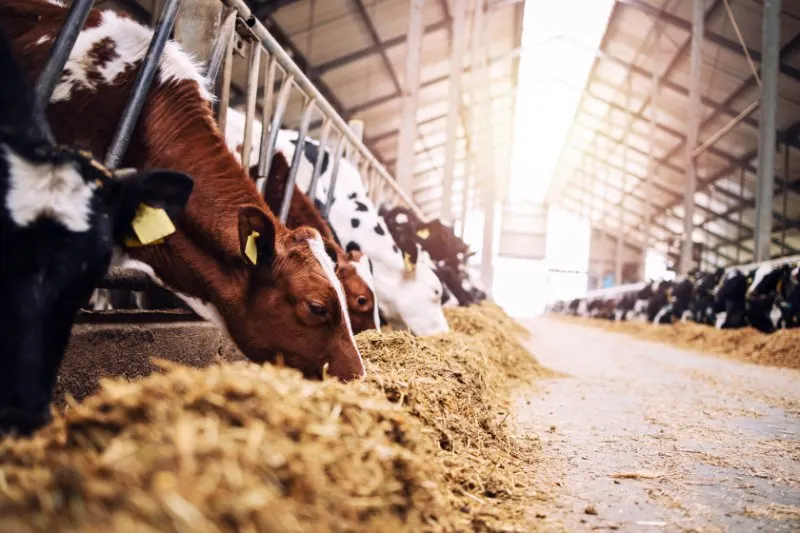
Understanding cow behavior and debunking misconceptions: Cows are often misunderstood, with many misconceptions surrounding their behavior. Contrary to popular belief, cows are docile and friendly and display complex social dynamics, maternal instincts, and communication methods. They form social groups called herds for safety and companionship.
Furthermore, cows exhibit nurturing behavior towards their young through their strong maternal instincts. While they may appear calm and gentle, it is important to remember that every cow has its individual temperament influenced by various factors such as environment and physical well-being of mother dairy cows. By understanding the complexities of cow behavior, we can dispel any misconceptions and appreciate these animals for who they truly are.
Social Nature of Cows
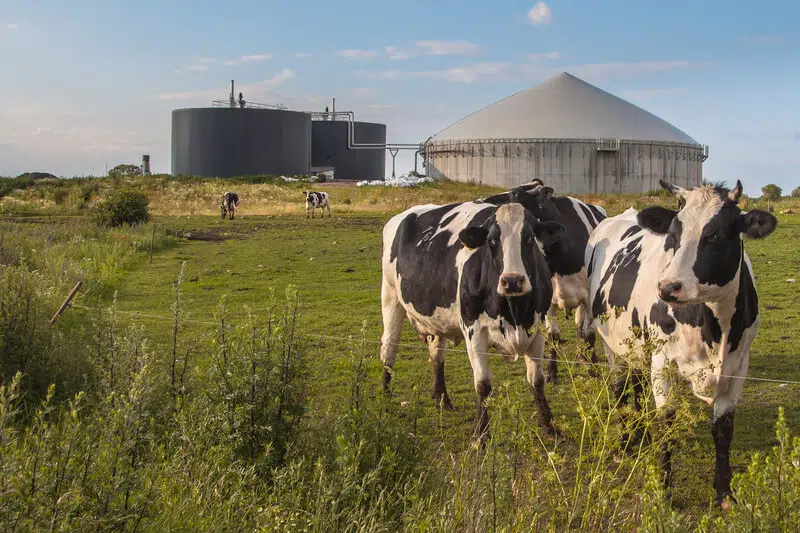
Cows are highly social animals, forming close-knit social groups known as herds. These herds provide cows with safety and companionship as they instinctively seek the presence of other cows. Cows develop strong bonds within their herds and engage in various social behaviors such as grooming each and other animals, and playing.
Additionally, cows display remarkable maternal instincts towards their young, nurturing and protecting them. Their social nature extends to their interactions with humans as well. Regular interaction builds trust and familiarity between cows and humans, further demonstrating their friendly and social behavior.
1. Herd Mentality: How cows form social groups for safety and companionship
Cows exhibit a strong herd mentality, forming tight social groups for safety and companionship. They instinctively seek the presence of other cows, as herds provide protection from predators and allow them to communicate and support one another.
Within these groups, cows develop close bonds, engaging in social behaviors such as grooming each other and playing. The herd provides a sense of security and comfort for cows, ensuring their well-being. This natural inclination to form social groups demonstrates the friendly and pleasant nature of cows.
2. Maternal Instincts: The nurturing behavior of cows towards their young
Cows exhibit strong maternal instincts and display nurturing behavior towards their young. When a cow gives birth, she protects her calf, ensuring its safety and well-being. The mother cow will nurse her calf, providing essential nutrients through her milk. She will also groom and bond with the calf, establishing a strong mother-child relationship.
Cows are known for their gentle nature towards their offspring, creating a nurturing environment that promotes growth and development. This maternal instinct highlights cows’ caring and friendly nature, further debunking misconceptions about their behavior.
Cows and Humans
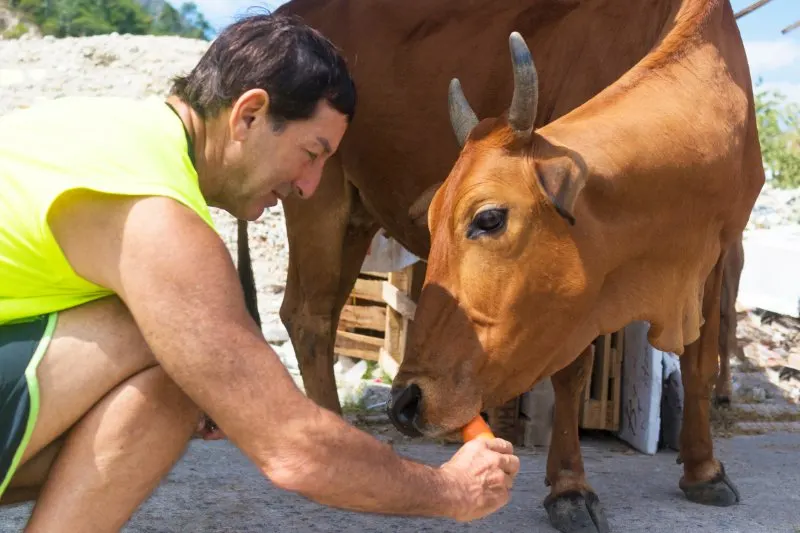
Cows have a unique relationship with humans. Humans can build trust and familiarity with cows through regular interaction and consistent care. This involves spending time with them, providing food and water, and ensuring their well-being. Cows are highly perceptive animals and can sense human emotions.
They respond positively to gentle handling and calm demeanor, fostering a deeper connection. Cows communicate with humans through body language, vocalizations, and eye contact. With understanding and respect for cow behavior, humans can establish a bond that promotes a friendly association between the two species.
1. Trust and Familiarity: Building relationships with cows through regular interaction
Building trust and familiarity with cows is essential for establishing a friendly relationship. This can be achieved through regular interaction with the cows. Spending time with them, providing food and water, and ensuring their well-being are all crucial steps in building trust. It is important to approach cows with a calm demeanor and gentle handling, as they are wise and intelligent animals that can sense human emotions. By consistently displaying kindness and respect towards cows, humans can foster a deeper connection based on trust and familiarity, leading to a positive association between the two species.
2. Communication with Humans: How cows express their emotions and intentions
Cows have various ways of communicating their emotions and intentions to humans. They can express contentment and relaxation through low-pitched vocalizations, often accompanied by gentle body movements like head-nudging or rubbing against humans.
On the other hand, cows may exhibit signs of discomfort or distress by raising their tails, pacing back and forth, or becoming agitated. By observing these nonverbal cues, humans can gain insight into the emotional state of cows and adjust their interactions accordingly. Humans need to be attentive and responsive to these signals in order to ensure a positive and respectful relationship with cows.
Factors Influencing Cow Behavior
Environmental Factors: The behavior of cows can be influenced by their surroundings. Factors such as temperature, humidity, and availability of food and water can impact their behavior. Cows tend to seek shelter during extreme weather conditions or when they feel threatened by predators. They also exhibit different behaviors responding to environmental changes, such as grazing patterns or social interactions. Adequate space and proper handling facilities are important for maintaining positive cow behavior.
Physical Well-being: The health and comfort of cows play a significant role in determining their behavior. When cows are experiencing pain or discomfort due to factors like injuries, illness, or inadequate nutrition, they may exhibit changes in behavior such as restlessness or aggression. Providing proper veterinary care, nutritionally balanced diets, clean and comfortable housing, and regular exercise can help improve the well-being of cows and promote positive behavior.
Understanding these factors is essential for ensuring calves’ welfare and managing cows’ behavior effectively. Providing suitable environmental conditions and addressing physical well-being are crucial to creating a friendly and harmonious relationship with cows.
1. Environmental Factors: How the surroundings affect cow behavior
The surrounding environment plays a crucial role in influencing cow behavior. Factors such as temperature, humidity, and the availability of food and water can significantly impact their demeanor. When faced with extreme weather conditions or the presence of predators, cows seek shelter for protection.
Environmental changes, such as alterations in grazing patterns or social interactions, can trigger different cow behaviors. Providing adequate space and proper handling facilities that cater to their environmental needs is important to maintain positive cow behavior. Considering these environmental factors creates a friendly and harmonious relationship with cows.
2. Physical Well-being: The impact of health and comfort on cow temperament
The physical well-being of cows plays a significant role in determining their temperament. When cows are in good health and comfortable, they are more likely to exhibit friendly behavior. Cows that are well-nourished and free from pain or discomfort tend to be calmer and more pleasant.
On the other hand, cows experiencing health issues or discomfort may display signs of irritability or aggression. It is essential to provide proper nutrition, regular veterinary care, and a comfortable environment with adequate space, clean bedding, and proper ventilation to ensure the overall well-being of cows and promote friendliness in their behavior.
See Related: Fatal Animal Attacks: What Animals Eat Humans?
Cows and Aggression
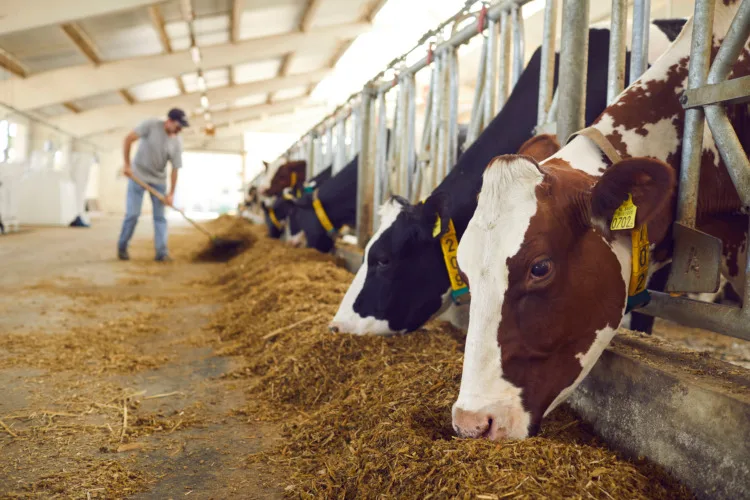
Cows can display aggressive behavior, although it is not their natural inclination. Aggression in cows can be influenced by factors such as fear, pain, or protecting their young or territory. Understanding the reasons behind aggressive behavior is essential for ensuring the safety of both humans and cows.
Techniques for preventing and managing aggressive encounters include providing adequate space, avoiding sudden movements or loud noises, and maintaining a calm and confident demeanor when interacting with cows.
Additionally, implementing proper handling facilities and training techniques can help minimize the risk of aggression in cows. Addressing these factors and handling cows with care and respect can minimize instances of aggression.
1. Understanding Aggression: The reasons behind aggressive behavior in cows
Various factors can influence aggression in cows. Fear is one common reason for aggressive behavior, as cows may feel threatened and respond defensively. Pain or discomfort, such as an injury or illness, can also lead to aggression. Additionally, cows can exhibit protective behavior when defending their young or territory.
It’s important to recognize these underlying reasons for aggression to address them effectively. By providing a safe and comfortable environment for cows, addressing any potential pain or discomfort, and understanding their natural behaviors, we can help minimize aggressive encounters with these gentle animals.
2. Avoiding Conflict: Techniques to prevent and manage aggressive encounters
To avoid conflicts with cows and manage aggressive encounters with farm animals, it is crucial to understand their behavior and take appropriate measures. One effective technique is to provide a safe and comfortable environment for the cows, ensuring they have ample space, proper nutrition, and access to clean water. Observing their behavior can help identify signs of agitation or stress.
Additionally, maintaining calm and gentle interactions with the cows is essential. Sudden movements or loud noises can startle them and trigger aggressive responses. It is important to approach cows slowly and quietly, avoiding any threatening gestures or actions.
Furthermore, establishing clear boundaries and using safe handling techniques can help prevent aggressive encounters. Proper fencing and gates should be in place to maintain separation between individual cows or groups of cattle, helping minimize territorial conflicts.
Regular veterinary care is also crucial to address any underlying health issues contributing to cow aggression. Identifying and treating pain or discomfort promptly can significantly reduce aggressive animal behavior.
By implementing these techniques and understanding cow behavior, farmers and caretakers can create a harmonious environment that reduces the risk of conflicts and facilitates better interactions with these gentle and intelligent animals.
Overall assessment of cow behavior and their potential for friendliness
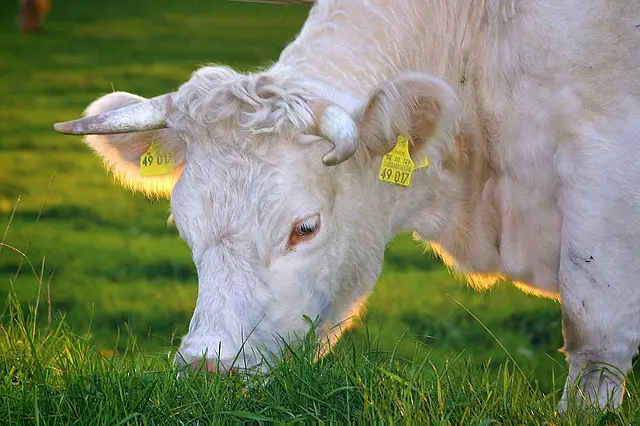
Cow behavior is generally docile and friendly, making them excellent candidates for human interaction. They are naturally inclined to form social groups and exhibit nurturing behavior towards their young. Cows can build trust and familiarity with humans through regular interactions, allowing smoother communication. Their temperament is greatly influenced by environmental factors and physical well-being, emphasizing the need for a comfortable and healthy environment.
While there may be aggression in cows, preventive measures such as providing a safe environment and using proper handling techniques can minimize conflicts. With the right approach and understanding, cows have great potential for friendliness and harmonious interactions with humans.
Frequently Asked Questions about cow behavior
Are cows naturally friendly towards humans?
Cows have a generally docile and friendly nature, making them potential candidates for human interaction. However, their friendliness can vary depending on factors such as individual temperament, environment, and previous life experiences with humans.
Can cows be trained to be friendly?
Yes, cows can be trained to develop friendlier behaviors towards humans through regular interactions and positive reinforcement techniques. Building trust and familiarity raising cows over time is crucial in fostering a harmonious relationship with cows.
What should I do if I encounter an aggressive cow?
It is important to avoid provoking or startling the cow further. Slowly back away while facing the cow and try to find a barrier or obstacle between you and the cow. Seek assistance from experts or professionals who can handle the situation safely.
Do cows exhibit any warning signs before becoming aggressive?
Yes, cows often display warning signs before becoming aggressive. These may include raised heads, lowered ears, snorting, pawing the ground, or giving intense stares. It is important to recognize these signals and give the cow space to calm down.
Can cows feel emotions like happiness or sadness?
Cows are capable of experiencing a range of emotions, including happiness and sadness. They can also show affection towards other members of their herd or bond with friends or their caretakers through positive interactions.
How do environmental factors affect cow behavior?
Environmental factors such as temperature extremes, overcrowding, inadequate shelter or pasture conditions can contribute to dairy cows’ stress and negatively impact their behavior. A comfortable and suitable environment is essential for maintaining good cow health and behavior.
What precautions should I take when approaching a cow?
When approaching a cow, it is important to remain calm and move slowly to minimize any potential fear or aggression. Avoid sudden movements or loud noises that can startle them. Always be aware of your surroundings and maintain a safe distance to ensure your own safety.
Can cows recognize individual humans?
Cows can recognize individual humans and respond differently based on previous interactions. Regular and consistent positive experiences with specific individuals can help in establishing familiarity and trust between cows herd animals and humans.
Related Resources:
